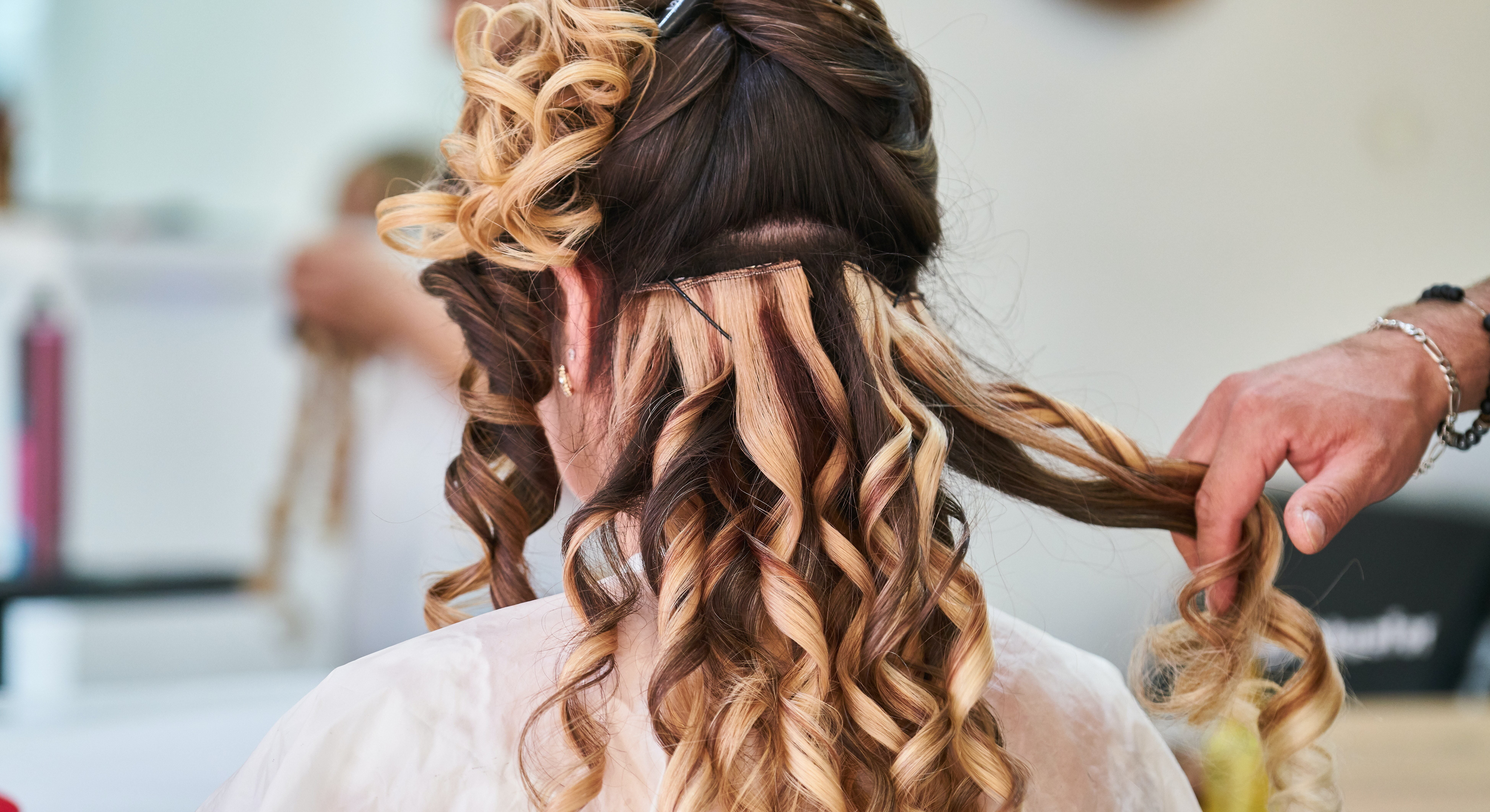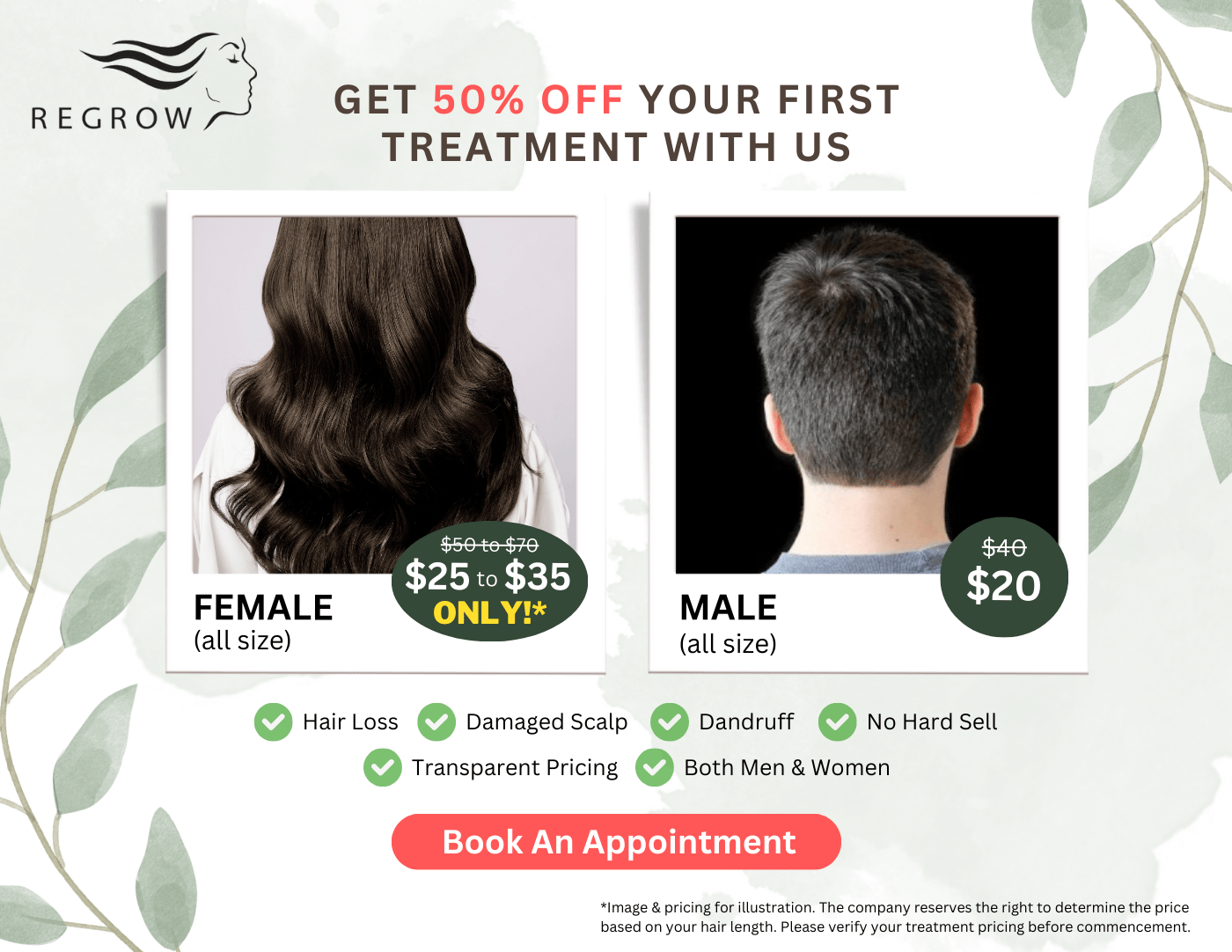Last Updated on: 17th September 2023, 01:17 pm
With so many different types of perms that are available in hair salons, are they all damaging to the hair?
The answer, according to pros, is it depends on your hair texture and what you’ve done to it in the past.
Read on for everything you need to know before trying out the treatment for yourself.
What is a perm?
In simple terms, a perm is a chemical curling treatment for your hair which is different from a relaxing treatment, that does the opposite and uses chemicals to straighten hair.
The chemical process for a perm works in a way that reprograms the hair from the inside by breaking down its natural molecular structure. It will soften and swell the hair by opening the cuticle which allows the perm solution to penetrate into the cortex of the hair strands.
The curl-perm process adds body and volume to flat or straight hair, giving it more volume and making it easier to style.
After putting perm lotion, your stylist will wrap your hair around perming rods (which will determine the size and style of your curls), and then coat your hair with perm lotion.
Depending on your stylist’s technique and the size of the rods they’re using, you can get everything from beach waves to tight ringlets. After the perm, neutralizing the chemicals in the hair is important to stop the curling process and set the curls.
Perms and hair types
Virgin hair works best for any chemical process and people with virgin hair are also the ideal candidates for a perm. This is because if your hair has too much damage, the hair strands can be too fragile to hold the process of permed hair.
Highlighted hair especially when bleached may result in an uneven perm as some of the hair strands are healthy while others are damaged hair. Therefore, perming highlighted hair is not advisable especially when the highlights have been bleached.
Hair textures also play a role in the type of perms you are looking for. Some hair textures have permanent waves and they may opt for perms to accentuate their natural texture rather than completely change them. There are also root perms where the roots of the hair are perm and the rest are left alone. This will give more volume to the top of the head.
Do perms ruin your hair?
While perms don’t work the same way bleach does, they still change the chemical composition of your hair cuticle.
If you are someone with dry hair, coloured hair, suffer from hair thinning, or have severe hair damage, a perm can create more hair breakage and damage your hair in a way that can be hard to salvage later on.
The general idea to discourage perm damage is to ensure you do not have multiple chemical treatments like highlighted hair, bleaching, colour treatments, or relaxers using a flat iron and perms within a short period of time. You should allow your hair to rest for a few weeks and apply a deep conditioning treatment and protein bonds at least once a week to replenish the damage done to your hair structure.
Certain types of perms such as the alkaline perms can be more damaging compared to other perms as our hair tends to be more acidic. Perm solutions such as the ammonium thioglycolate sit around 9.5 on the alkaline scale which can damage your hair especially when done poorly.
There is such a thing as an acid perm, but while these are less damaging to strands, they can cause allergic reactions on your scalp.
Are Perms Safe?
Any chemical service should be done by a professional who knows what they’re doing to stop further damage and chemical burns to your hair. If a stylist is good, they will be able to give you great advice, and regardless of the perming process used, they will ensure your hair health is maintained.
According to the California Board of Barbering and Cosmetology, exposure to the chemicals found in some perming solutions can cause everything from headaches and nausea to redness, itching, and even burning.
So, while the technology for modern perms is there to ensure that most perms are safe for your hair, you still want to be careful about coming into contact with the solutions.
What are the different types of perms?
There are two main types of perm and they are called digital perm and ceramic perm.
They both use a combination of chemicals that focuses on breaking and reforming the bonds of the hair and the use of different-sized rods to define how the overall perm will look.
Digital or hot perms use a heated approach. The method involves moulding the hair using heated rods and dousing it in an acidic solution that breaks the disulfide bonds in your hair. This process is most suitable for long hair and straight hair as it creates a uniform look with permanent waving that creates body and volume.
The ceramic or cold perm uses a no heat perming process with a less damaging alkaline solution. This perm is suitable for curlier hair types that want a perm to accentuate their natural curls, shorter hair, and thinning hair.
Cold perms will give tight, vintage-looking curls, while hot perms tend to look more natural. Both approaches end with the application of a neutralizer like hydrogen peroxide to lock in the curls.
What can you do to make your perm last longer?
It is important to care for your hair especially when it has been chemically processed.
If your hair becomes too dry and frizzy, your perm may suffer irreversible damage that can only be fixed by the passage of time.
Here are a few things you should do for your hair post perm:
- Get a trim – You should schedule a haircut every three to four months to keep your perm in tip-top condition. Adding layers can help bring your curls back to life.
- Avoid heat styling – If you can, try to avoid using a hair dryer and allow your hair to dry naturally. When heat styling is used too often, it can dry out your hair which will cause your curls to look like unhealthy hair, it can lead to serious breakage, split ends, and even more hair fall.
- Do a protein treatment – Human hair is made mostly of protein therefore when you get a perm, protein is destroyed as most perm solutions need to break your hair down to change its structure. You can look for protein treatments in the market to disulfide bonds or you can also make your own protein hair mask once a week by combining egg and yoghurt or yoghurt with avocado and coconut milk.
- Use a hair mask – It is not enough to usea conditioner but after getting a perm, it is compulsory to incorporate a hair mask into your weekly hair care routine to keep your hair healthy.
- Change your brush – Brushing with the wrong brush can change the look of your curls. When it is wet, you can use a wide-toothed comb and when it’s dry, you can use a soft paddle brush to remove any unwanted knots.
- Change your hair products – There are plenty of hair styling products within the hair industry and you can choose styling creams and mouses to give you voluptuous curls that literally look like new curls. There are even products that can refresh your perm to make it look like you just perm your hair without actually perming it.
- Change your sleeping habits – Use a silk pillowcase to reduce friction when sleeping or you can wrap your hair in a silk scarf to keep your curls fresh for longer.
- Avoid more chemicals – You should wait for at least a month after your perm before applying any further chemicals to your hair.
Summary
If you have unprocessed hair, you can get a perm with the best results regardless of your hair type.
However, if you do not have virgin hair, you should seek the advice of a professional before getting a perm and avoid chemical treatments for at least a month before doing anything else to your hair.







